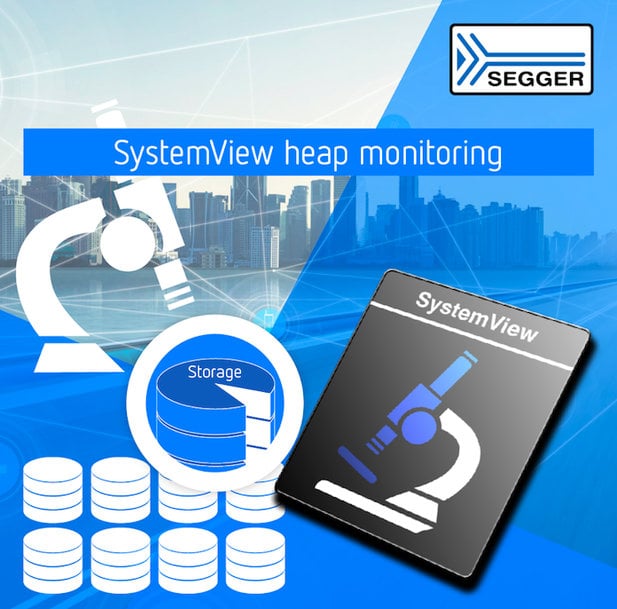www.magazine-industry-usa.com
27
'23
Written on Modified on
SEGGER’s SystemView adds heap monitoring
SEGGER's SystemView can monitor how applications use dynamic storage, presenting usage information in an intuitive way.

In many cases, memory can be allocated for the lifetime of the application without an issue. The problem occurs when the peak load of the heap increases over time. In such a case, the application is probably leaking memory and will eventually run into trouble. With SystemView’s heap monitor, it is easy to see such changes and where allocations are made, providing clues as to where the leak might be. In addition, SystemView can monitor multiple heaps simultaneously.
“Dynamic storage is becoming more widely used in embedded systems. Engineers used to try and avoid it because of the difficulty in monitoring usage. As is often the case, this SystemView enhancement grew out of customer requests for this feature. With SystemView, monitoring and managing dynamic storage has changed from being something to avoid, to being something manageable,” says Rolf Segger, founder of SEGGER.
For applications using the C or C++ heap, multiple custom heaps, or memory pool objects offered by an RTOS, SystemView can trace how these are used over time. Each block of memory is tagged and this tag is maintained in the SystemView application. This aligns with SEGGER's philosophy of minimizing target resource requirements as there is minimal added strain on the target.
To test SystemView, simply download and go. Under SEGGER's Friendly License, SystemView can be downloaded without registration and be used free of charge for educational and non-commercial purposes, as well as evaluated on all platforms without code size, feature, or time limitations.
For more information on SystemView, please visit: www.segger.com/systemview.
www.segger.com

